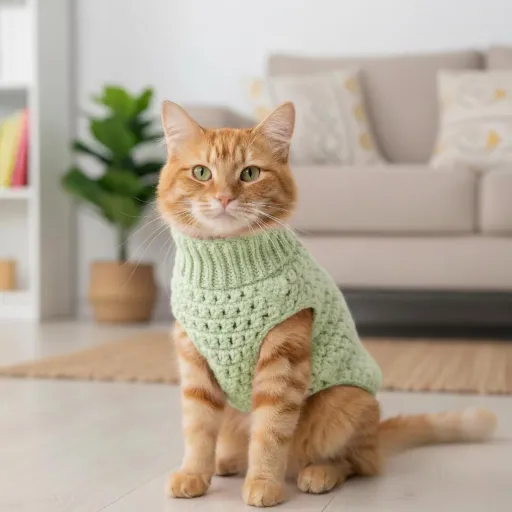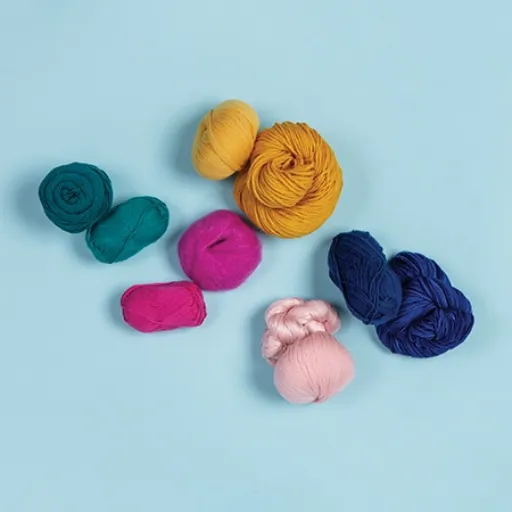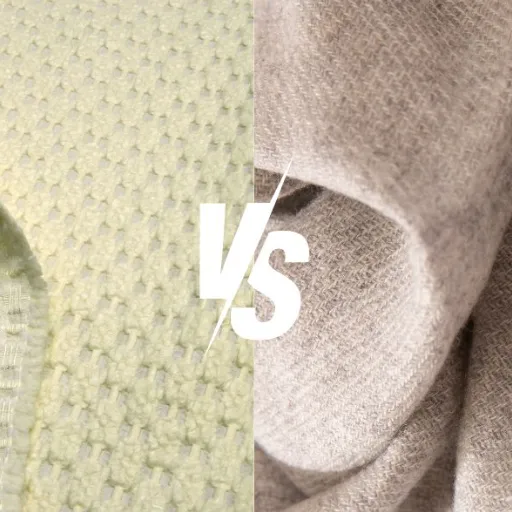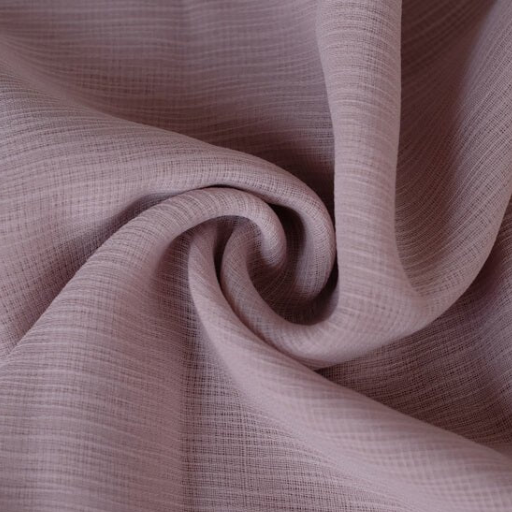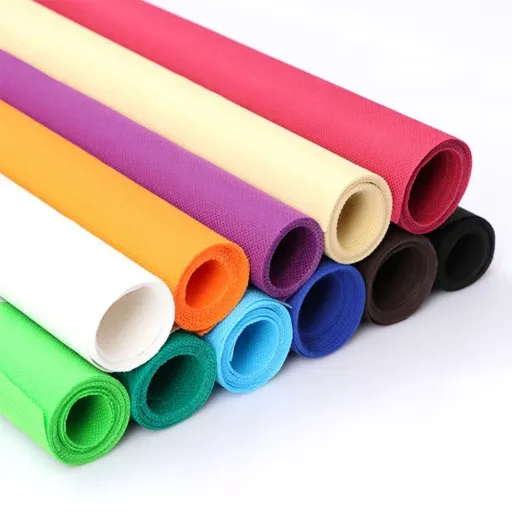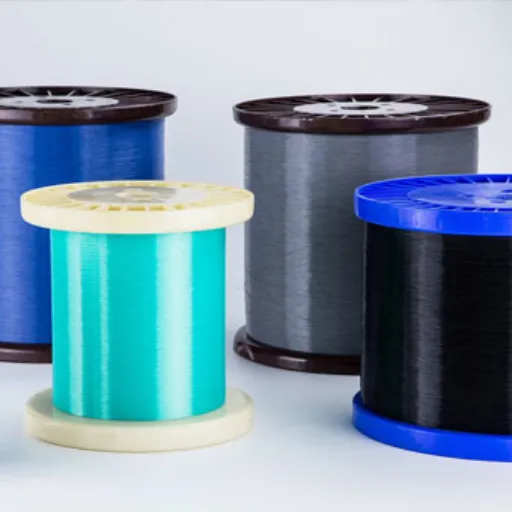A very sought-after fabric, viscose is a versatile cloth that has seeped into every possible wardrobe and household. But what exactly constitutes viscose? And what makes it different from rayon? With its luxurious feel, being less expensive, and having multiple uses, viscose is often considered a favorite in fashion and textiles. This fabric is technically different from the more commonly known types of rayons in its specifics and production methods. This article unravels everything about viscose fiber and its relation to rayon: its origin, properties, advantages, disadvantages, and sustainability impacts. So at any rate, either the consumer is armed with knowledge or simply inquisitive about this marvelous fabric; you’ve found yourself on the right page-there is more to read on viscose and its contribution to the textile industry.
Understanding Viscose Fiber
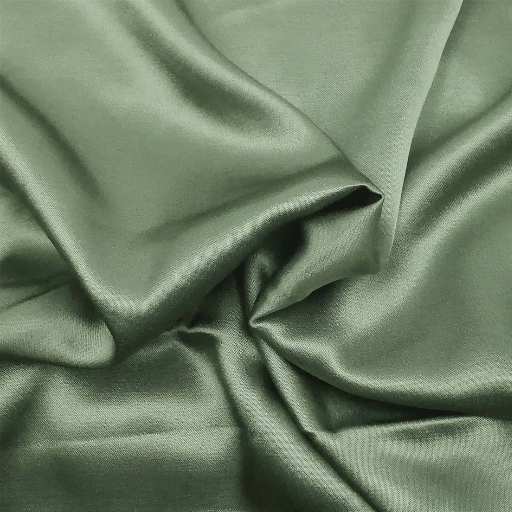
What is Viscose?
Viscose is a category of semi-synthetic fiber that is made from cellulose-the natural polymer found in plants, mostly wood pulp. Some chemical processes are undertaken on cellulose to produce a very adaptable material that closely imitates natural fibers such as cotton, silk, or wool. Because of its beauty and feeling soft, it is much used as a textile for clothing, lining, and upholstery.
These fibers are made by an industrial process in which cellulose from plant fiber is dissolved in some chemical solution to form a very viscous liquid from which fibers are then spun. Thus, it is a fabric that combines some of the best qualities of natural and synthetic fibers. Viscose is a breathable, lightweight smooth fabric that can be made into garments giving comfort and style in equal proportion.
Among its many advantages, the production processes for viscose also give rise to environmental concerns: the use of harsh chemicals and the extensive water consumption involved in processing it. However, with changing production technologies and practices toward sustainability, the environmental footprint is slowly but surely putting itself on a better path. Such considerations thus make it easier for the consumer to have much knowledge in considering the textiles they buy.
The Origins of Viscose Fabric
Viscose fabric traces its origin to cellulose, a natural polymer present in plant materials such as wood pulp or cotton linters. This is the starting point where these plant-based sources are broken down into a soluble compound and spun into fibers. The conversion process goes some way to bridging the gap between the so-called natural and synthetic textiles and is the main reason why viscose is seen as a semi-synthetic fabric, which is commonly used because of its versatility and similarity to silk.
In the last quarter of the 19th century, the manufacturing process for viscose was developed so as to have an inexpensive substitute for silk. Scientists discovered if they treated cellulose with such chemicals as sodium hydroxide and carbon disulfide, they could achieve a substance that could be drawn into very fine strands. These strands were both durable and soft, hence making an ideal textile with which to manufacture clothing, upholstery, and industrial products in general.
Initially, viscose found appreciation for being inexpensive and resembling natural fibers; however, with the course of time, it has been also implicated in environmental harm. It faces chemical treatments along with huge water requirements. Novel ecological initiatives like closed-loop technology to minimize chemical wastes have paved the path toward a greener production of viscose that allows it to stay in heavy demand.
Cellulose and its Role in Viscose Production
Cellulose is the primary raw material used in the production of viscose fiber. It is a natural polymer derived from plant-based sources such as wood pulp or cotton. This organic compound serves as the foundation for creating a fiber that mimics the look and feel of natural materials like silk or cotton while being versatile and cost-effective.
The process begins by extracting cellulose from these raw materials through a series of purification steps. The purified cellulose is dissolved in chemicals to create a viscous liquid, which is then spun into fibers. This transformation from natural cellulose to man-made fiber is what enables viscose to combine the benefits of natural and synthetic fibers, such as softness, breathability, and durability.
Cellulose’s role is vital not only for the structural qualities it imparts to viscose but also because it makes the material biodegradable under the right conditions. However, the sustainability of viscose production relies heavily on responsibly sourcing cellulose and improving manufacturing practices to reduce environmental impact. By focusing on sustainable forestry and closed-loop systems, the industry can ensure cellulose use aligns with eco-friendly goals.
The Production Process of Viscose
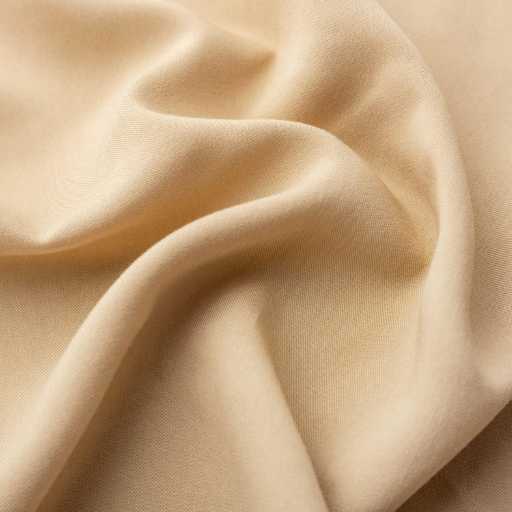
Raw Materials for Viscose Fiber
Viscose fiber is mainly derived from cellulose, which is a natural polymer found in the cell walls of plants. The most common raw materials for cellulose production for viscose manufacture are wood pulps, usually coming from trees such as beech, spruce, and eucalyptus. These trees are the preferred ones because of their rapid growth and high cellulose content, thereby amenable to large-scale production.
Such wood pulp should be processed to eliminate lignin and other non-cellulosic materials. At the end of this process, what remains is purified cellulose, which is the base for forming viscose fiber. The raw materials must be sourced responsibly for sustainability; techniques like sustainable forestry and certification standards such as the FSC (Forest Stewardship Council) have improved credibility and lowered ecological damage.
Other cellulose sources, such as bamboo, are used because they provide renewable and fast-growing materials. However, the environmental impacts of these alternatives vary depending on their cultivation and processing methods. Hence, conscious selection of raw materials is paramount to reduce deforestation, avoid the disruption of biodiversity, and promote the viscose-producing process as a sustainable development goal.
Steps in the Production Process
- Cellulose Preparation: The raw material is washed and treated to isolate pure cellulose content, which is important for its suitability for the forthcoming chemical process. Unlike the crude and nearly dry wood pulp or bamboo, it must be suitable for chemical treatment.
- Chemical Treatment: The cellulose is converted to its viscose form by conversion into a “honey-like” liquid due to the dissolution of cellulose in a chemical solution with sodium hydroxide and carbon disulfide. Once made into a liquid, the material could then be formed into fibers.
- Solution Refinement: The solution undergoes aging, filtering, and further refinement to rid it of any impurities that could affect the quality of the end product.
- Fiber Formation: The viscose solution is extruded into a sulfuric acid bath to coagulate the liquid into fibers, which are then washed, bleached, and carefully dried before being spun into yarn or woven into fabric.
With all the steps involved, this process illustrates the extreme sophistication that goes into converting raw renewable materials into multi-use textiles.
Types of Rayon: Conventional Viscose vs. Modal
| Aspect | Conventional Viscose | Modal |
|---|---|---|
| Production | Heavy chemical usage, dissolves cellulose to form fibers | Modified processing for enhanced qualities, more eco-friendly |
| Raw Material | Various wood sources | Primarily beech tree cellulose |
| Properties | Soft, versatile, mimics natural fibers | Stronger, smoother, more durable |
| Environmental Impact | Less environmentally friendly | More eco-friendly, minimizes chemical waste |
| Applications | Cheap, soft fabrics | Activewear, bed linens, high-performance fabrics |
Benefits of Viscose Fabric
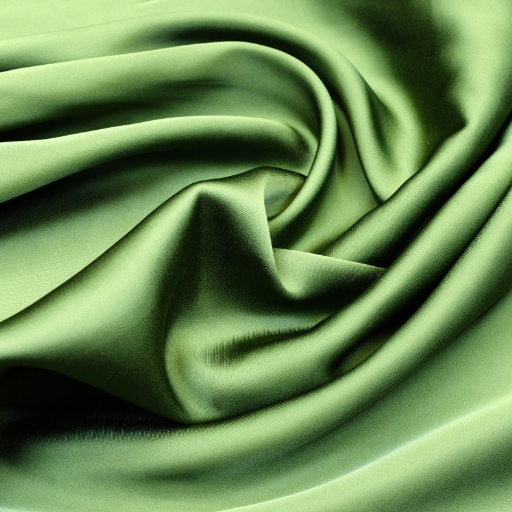
Softness and Comfort of Viscose
Many would go ahead and deem viscosity fabric as the softest fabric with true comfort. Its texture seldom opposes the skin and is sometimes considered to feel like silk. For being comfortable, it is thus good to consider viscose for making blouses, dresses, and undergarments. Also considered are household textiles such as bedsheets and curtains.
The breathability and lightness in the wearability of viscose grant its comfort. Great air circulation is provided by the fabric, so it is good to wear in weather that is hot or even when actively indulging. Also, this property allows the perspiration to be absorbed naturally, thus making one cool and dry. It is a comfort feature, be it in casual or active performance wear.
In the way pleasant soft touch is forever cherished, getting softer with time becomes the viscose touch. Unlike some cloths whose comfort gradually fades with repeated use, viscose retains its softness as long as it is properly cared for. The fabric’s adaptable nature and luxurious comfort made it just the right choice for any individual who coveted versatility with a bit of charm.
Biodegradable Properties of Viscose
Viscose is considered biodegradable as it is created from natural cellulose fibers, which are usually derived from wood pulp or bamboo. Such fibers degrade fairly quickly in an ideal environment, which would mean the presence of microorganisms, moisture, and the oxygen content in the surroundings. This of course makes viscose a more biodegradable option in comparison with many synthetic fabrics that linger for a longer time.
The biodegradation of the viscose depends largely on the factors, for instance, the manufacturing processes it is subjected to and whether or not any chemical treatment is applied. Untreated viscose will degrade fairly well, whereas chemically treated ones will be subjected to longer periods of degradation or conditions and so forth. Hence, in general, viscose will likely have less environmental impact post-disposal than non-biodegradable materials such as polyester.
While the input asserts that viscose is biodegradable, the output rightly distinguishes the environmental impact of production as a different issue. The process of manufacture could well involve some harmful chemicals affecting the ecosystems should they not be responsibly controlled. The selection of a sustainably made viscose would be a choice to consider with an eye on biodegradability and production techniques, both in tune with one’s environmental ethos.
Viscose vs. Polyester: A Comparative Analysis
| Comparison Factor | Viscose | Polyester |
|---|---|---|
| Origin | Semi-synthetic from natural cellulose (wood pulp) | Fully synthetic from petrochemical compounds |
| Feel & Comfort | Soft, breathable, silk-like texture | Durable, wrinkle-resistant, fast drying |
| Environmental Impact | Biodegradable, renewable source (when responsibly made) | Non-biodegradable, microplastic pollution concern |
| Production Concerns | Toxic chemicals, deforestation risk if unsustainable | Less dependent on natural resources |
| Best Use Cases | Comfort-focused apparel, home textiles | Technical applications, durability-focused items |
Applications of Viscose Fabric
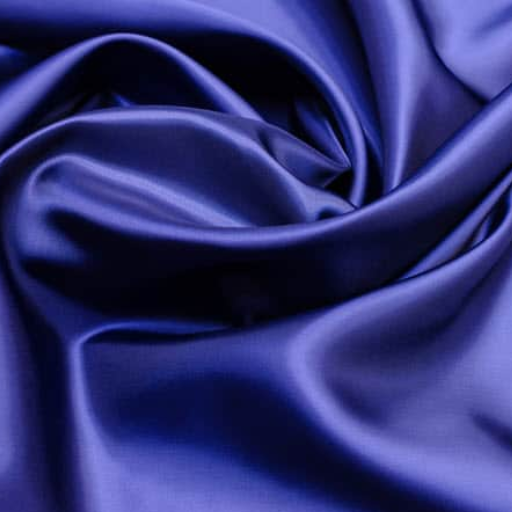
Common Uses of Viscose in Textiles
Garment Production
Different varieties of fabrics have been used in the textile industry for their assortment of uses and properties. One of them is the production of textiles for garments. Garments, such as dresses, blouses, and suits, are manufactured out of viscose because they are soft to touch, light, and have a great feel. These qualities render it appropriate for stylish dressing, the comfort of which may be enjoyed on pretty much any occasion.
Household Textiles
In addition to its uses in apparel, viscose is also employed for various household textiles. Curtains, bed linen, and cushion covers are made out of viscose because of its smoothness and ability to hold dyes. Being able to be dyed in vivid colors and having an expensive look put viscose down as an alternative to pricier fabrics for home décor, for colors and value.
Industrial Applications
Additionally, in industrial applications, viscose is used to make reinforced backing for carpets or upholstery. Its strength and flexibility allow it to be used in combination with other materials to impart durability and utility. Highlighting the various uses shows how viscose fabric touches almost every facet of the textile industry, ranging from utilitarian to decorative.
Viscose in Fashion: Trends and Styles
Being versatile, inexpensive, and possessing the qualities of silk-like luxuries, viscose has widely become one of the choices of the fashion world. Designers and buyers appreciate the fabric for the way it feels soft, lightweight, and drapes smoothly. This, in turn, makes it best used in flowing dresses, blouses, and skirts with the comfort of elegance achieved.
An important trend in fashion instruments is the use of viscose. Many firms have implemented ‘green’ methods in producing this fibre in an attempt to reduce the impact of viscose production on the environment. This has created more value for customers wanting to find trendy fashion items that suit their principles of sustainability and responsibility in life.
The fabric is generally mixed with other fibers to enhance strength and function. Such combinations provide versatility across fashion styles, from casual wear to formal attire. The fabric is treated with eye-catching dyes and vivid prints, which provide bold patterns and spirited designs that help it remain in newsworthy contemporary patterns.
Viscose as an Alternative to Natural Fibers
Vicious considers itself a common alternative for natural fibers. Whenever cost is a barrier to the direct use of natural types of fiber, the viscose industry offers alternatives that emulate the look and feel of true fibers. Some common fabrics made out of viscose were drapery fabric, dress fabric, and upholstery fabric. Being secondary synthetic fiber, viscose is made from plant-source cellulose; this keeps it eminently soft and breathable, much like cotton or silk. The higher versatility and affordability of viscose make it a preferred choice for people seeking a natural fiber alternative.
Another advantage of viscose is that it is highly adaptable to different uses. It can be blended with other fibres like polyester, or modal, and for increasing its strength, elasticity, or moisture-wicking ability. Such combinations increase further the range of its applicability in various industries for different functional and aesthetic requirements. The raw material underlying dreamy designs consists of dyes, which provide excellence in dyeing, giving brilliant and good color fastness; undoubtedly, favorable for contemporary and sustainable fashion trends.
Yet beverages, its production leads to its environmental challenges. For conventional viscose processing uses energy exhaustively and chemicals that may pollute if not taken care of along the established method. Different manufacturing techniques, such as closed-loop systems, now have been developed to lessen the levels of chemical waste and to use green processes. These developments are, therefore, making viscose much more sustainable, which has exacted greater efficacy as an alternative, capable of standing alongside conventional natural fibers in practical, responsible terms.
The Future of Viscose Fiber
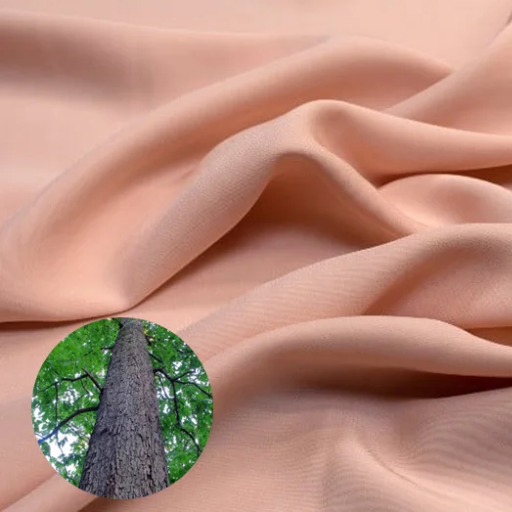
Innovations in Viscose Production
Recent innovations in viscose production are directed toward reducing its impact on the environment while maintaining function and cost. One of the major developments is the installation of closed-loop systems in viscose manufacture. These systems recycle and reuse chemicals in the production process, and thus greatly reduce the amount of waste waking up to the environment. This also provides for better utilization of resources and hence contributes to sustainability of the viscose production.
With sustainably sourced raw materials, like certified wood pulp, an increased emphasis shall be put on the greener side. By using resources that are renewable and responsibly harvested, producers ensure that viscose retains minimal environmental impact. Furthermore, new research aims at replacing hazardous chemicals, particularly carbon disulfide, with safer and biodegradable alternatives. These developments not only help reduce toxicity but also serve to place fabric production under increasingly stringent environmental regulations.
On another front is the improvement of waste treatment activities and wastewater management during production. With the aspects of reducing water pollution in place, facilities adopt advanced filtration and purification systems to treat chemical waste. All these developments have forged the path to greener viscose production techniques, keeping this highly versatile fiber on ellipses for a sustainable and appealing choice in the textile industry.
Sustainability in the Viscose Industry
Increasing sustainability is emphasized in the production of viscose fiber to address the pressing environmental concerns. The traditional processing technique uses large amounts of water and chemicals, while recent advances have brought about closed-loop production processes that create less waste. These production systems recycle chemicals and reduce emissions harmful to the environment to a level that does not pose significant environmental hazard.
Raw material sourcing is another great consideration for sustainable viscose production. To this end, many manufacturers source wood pulp that is sustainably harvested, sometimes certified by organizations that promote responsible forestry. This helps preserve biodiversity, lessen deforestation, and ensure raw materials’ availability in the long term for future generation use.
Sustainability efforts have also been extended to energy conservation. Many plants have embraced energy-efficient technologies for the reduction of greenhouse gas emissions. Together with changes in supply chain transparency and accountability, these alterations have considerably resolved the environmental concern of viscose reeling in the textile industry and have thus called for the increased demand of sustainable fashion.
Viscose’s Role in Eco-Friendly Fashion
Being renewable and having a lesser environmental impact than synthetics, viscose figues in the eco-fashion circle. It is a semi-sustainable material in that it is made out of cellulose, mostly from wood pulp. When made well, it is one of the few options that can replace petroleum-derived materials like polyester and lessen the fashion industry’s dependence on non-renewable resources.
Another major environmental plus that can be attributed to viscose is its theoretical biodegradability. Differing from their synthetic counterparts that can take centuries to decompose, viscose has the potential to break down more naturally under suitable conditions. This alleviates one major concern in textile landfills. With latest advancements, processes like closed-loop production have helped limit the usage of harmful chemicals and the emission of waste, thus making the production of viscose less harmful for the environment.
With this understanding, viscose is really sustainable only when responsibly sourced and manufactured. Pulping using wood from poorly managed forests must never be allowed, as deforestation is probably the major issue in today’s world. The processing must also be performed using environmentally responsible technology so as to create as little pollution as possible and consume a minimal amount of energy. These are measures that in an ideal situation should make viscose among the very materials to push forward eco-fashion-in response to consumer demand for good green selections.
Frequently Asked Questions (FAQ)
Q: What exactly is viscose fiber?
A: Viscose fiber, or rayon, is a special sort of fabric made from regenerated cellulose-a substance obtained from wood pulp. Being very versatile, it is soft to the touch and often taken as a substitute for silk for its smooth texture and drape.
Q: How is viscose rayon manufactured?
A: The many stages that lead to the making of viscose rayon include treating wood cellulose with caustic soda, thus forming alkali cellulose. Then, carbon disulphide is used to dissolve the cellulose and to create a viscous solution that will be passed through spinnerets to extrude rayon filaments.
Q: What are the main uses of viscose fiber?
A: Viscose fiber is mostly used in clothing, home textiles, and industrial applications. For its breathability and moisture-wicking capabilities, it is regularly chosen for garments such as dresses, linings, and even bed linens.
Q: Is bamboo viscose different from normal viscose?
A: Yes, for bamboo viscose is a type of viscose made out of bamboo pulp. It holds similar properties to regular viscose but the latter is frequently advertised as an alternative because bamboo grows quickly and can be harvested sustainably.
Q: What are the environmental impacts of the manufacture of rayon?
A: In the making of rayon, a number of environmental problems arise especially when harmful chemicals such as carbon disulphide and caustic soda are used. Indeed, the newer techniques promote the manufacture of rayon in a more sustainable way, such as in the use of a closed-loop system which reduces waste and pollution.
Q: Can viscose be considered a sustainable fabric?
A: Viscose can be sustainable when protective raw materials are used and environmentally friendly processes are employed. Many brands advocating lyocell, a type of viscose derived from wood, stress its relative environmental’ footprint as an appealing option among sustainable fabrics.
Q: How does viscose compare to cotton?
A: Viscose is basically the much softer alternative to cotton. While cotton is a natural fiber, viscose is more like a semi-synthetic fabric that brings with it the hybrid nature of natural and synthetic fibers, therefore giving free breathability and a silky feel.
Q: What are the advantages of wearing clothes made of viscose?
A: Viscose clothing speaks comfort and style. It absorbs moisture very well and is suitable for hot climates. It has also been known for its suited softness though it is like silk, making it a favorite choice for designers.
Q: What raw materials are used in the manufacture of viscose?
A: Viscose is made mainly from wood cellulose, which is a renewable raw material. Cellulose is first turned into cellulose xanthate and later regenerated to fiber form, thus allowing the production of a wood pulp-based fabric that is versatile and functional.
References
- Material Guide: What is Viscose and Is It Sustainable? – Good On You
Explains the origins of viscose, its production process, and its sustainability aspects. - Unveiling the Mystery of Viscose Fabric – Bhumi
Discusses the sources of viscose, including wood fibers and bamboo, and its various uses. - The Complete Guide to Rayon, Viscose, Modal, Lyocell, and Tencel – Yardblox
Offers insights into the manufacturing process and the relationship between viscose and other rayon-based fibers. - Viscose Fibers for Fabrics and Textile – LENZING™ ECOVERO™
Focuses on sustainable viscose fiber production and its environmental benefits.








